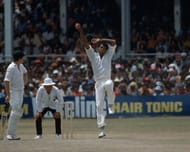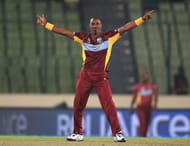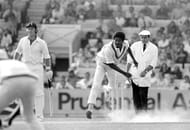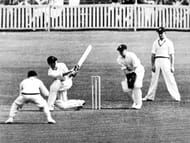As far as great cricketing entities are concerned, there are very few who can match up to the legacy and achievements of the West Indies.
It is not even a real nation, but the way cricketers from different Caribbean islands (nations in their own right) have come together to create a cricket culture of such significance is a wonder of the world.
On the other hand, the way they dominated world cricket from the late 1970s through to the early 1990s is unprecedented. West Indies did not lose a single Test series in 15 years and that is a feat that has never been bettered.
Additionally, the cricketers they produced, won with the sort of dominance that further endeared them to cricket fans.
However, like most cricketing nations, West Indian cricket has also gone through its fair share of controversies and like it is the case with other international teams, the nature of the controversies has varied over the years.
This is a look at five of the biggest controversies that West Indian cricket has ever been involved in.
#5 Grounded in London
Pay disputes and West Indian cricket perhaps go hand in hand these days but that was not always the case, which is why the events of November 1998 will always be remembered as a pivotal point in the history of pay disputes.
West Indies were scheduled to go on a full tour of South Africa in 1998 but in the lead up to the series, the players had made certain demands regarding tour payments, allowance and travel arrangements. It seemed that everything would eventually be sorted out when the players left for South Africa but it was evidently not the case.
The West Indian cricketers, led by captain Brian Lara and vice-captain Carl Hooper stayed put at London and refused to travel to South Africa.
In their exasperation, the West Indies Cricket Board fired both as the tour was sent into jeopardy and sponsors were angry at the developments.
However, after a few days of negotiations, a solution was reached and the players traveled to South Africa. Lara was reinstated as captain and the pay dispute was resolved. West Indies went on to lose the Test series 5-0.
#4 Rebel tour to South Africa

South Africa had been boycotted from international cricket due to their apartheid regime and treatment of colored people in their own country, but they had a strong desire to be part of the international game.
To that end, they started offering huge amounts of money to international cricketers to tour the country and play cricket against local teams. It remains one of the most controversial moves in modern cricket and one that is still considered a shameful episode in the careers of most cricketers.
When England first toured as a rebel team in 1982 there was widespread controversy, but when the West Indies rebel team visited South Africa, the political implications reached fever pitch. Considering the treatment of blacks in South Africa, it was unthinkable that a team of black cricketers decided to tour the country.
Active Test cricketers stood to earn $120,000 while those who had not played Test cricket would be paid $100,000 over two seasons.
Players like Lawrence Rowe, Colin Croft, Sylvester Clarke and Ezra Moseley among others went on those tours. Many of the players were on the fringes of selection but never quite made it to the team and were often not as well paid.
So, it all perhaps made sense, but the controversy never died down and even to this day, those cricketers are not respected by the locals.
#3 Pull out of the tour of India

Back in 2014, the West Indies arrived in India for a full tour that included five ODIs, 1 solitary T20I and then three Test matches. While the West Indies won the first ODI handsomely and India stormed back to win the next one to set up a classic series, something else was brewing under the surface.
It was a payment dispute between the players and the West Indies Players Association (WIPA) and despite constant communication between the two parties, no solution seemed forthcoming.
The West Indian players had signed a memorandum of understanding according to which all the sponsorship payments that were supposed to accrue to them were foregone.
The foregone payments were to be used towards improving the pay of first-class cricketers. However, the ODI captain during the tour Dwayne Bravo maintained that the players had been ‘hoodwinked’ into signing the document.
It was a big payoff that the players were missing out on and while a pullout from the India tour seemed unthinkable at the time, things soon came to pass.
After the fourth ODI at Dharamsala, which the West Indies lost, Bravo’s team pulled out of the tour. It was not only controversial but embarrassing and remains one of the biggest controversies that have engulfed West Indian cricket in the recent past.
#2 Bloodbath in Jamaica

The West Indies had been trounced 5-1 in the Test series in Australia in 1975-76 and when the Test series against India came along, their captain Clive Lloyd was desperate for a win.
However, things had not gone to plan and India had, in fact, squared the series at Port of Spain after chasing down a record 406 in the third Test.
In the fourth and final Test at Kingston, India batted first and the openers Anshuman Gaekwad and Sunil Gavaskar held on comfortably for the entire first session.
That is when captain Lloyd gave in to desperation and instructed his bowler to resort to tactics that probably led to the birth of the fearsome West Indian fast bowling machine.
West Indian fast bowlers, led by Michael Holding and Wayne Daniel, resorted to bowling one bouncer after another with a few beamers in between.
The local umpires refused to step in and although India ended the day with only the loss of one wicket, they had no idea what was in store on the second day.
Lloyd took the new ball and with that new missile in hand, Holding started attacking the batsmen with bouncers and beamers.
Gundappa Vishwanath got out trying to fend off such a bouncer, while Anshuman Gaekwad got hit on his left ear and had to go off.
Brijesh Patel had his lips busted and had to go off. India declared at 306 for 6 and in the second innings, as many as five players were ‘absent hurt’.
West Indies won with ease but the game remains a controversial episode in their cricket history, not only because of those tactics but also because of Lloyd’s comments later on. He stated, “This is cricket — if you get hit you have to take it!”
#1 The Second-most Controversial tour in history

England’s tour to the West Indies back in 1953-54 remains one of the most controversial episodes in the history of cricket and according to Wisden, it is the second most controversial tour in cricket history.
Due to the political upheavals that had taken place over the years leading up to the series (India’s independence among others), the Caribbean islands were also looking for independence from the Commonwealth and it was in that backdrop that the England team arrived in the West Indies.
The white population in the islands goaded the team to beat the local teams and although the England team refused to be drawn into such partisanship, there was palpable discord between the tourists and the opposition.
England captain Len Hutton refused to socialise with the West Indian players and that struck a bad note as well. However, that was only the tip of the problems.
The local umpire’s decision to give Jamaican player JK Holt out leg before in the first Test at his home ground led to an assault on his family.
On the other hand, a runout decision sparked a riot in the stands and bottles were thrown on to the pitch.
Play had to be suspended for a bit. England spinner was also no-balled for chucking when he bowled the quicker delivery and that remained another bone of contention. In that regard, it must be said that Lock had been no-balled for chucking in the past as well.
However, the biggest incident occurred when Len Hutton had apparently ignored the congratulations offered by Alexander Bustamante (the Jamaican chief minister) and walked straight into the dressing room.
Right after the incident, England’s player-manager Charles Palmer was assaulted by one of the members of the minister’s minions. It was a tour that remains a controversial episode in West Indian cricket history and one that Hutton later claimed ate up two years of his career.
What do you think about our list? Sound off your opinion in the comments section below!
Looking for fast live cricket scores? Download CricRocket and get fast score updates, top-notch commentary in-depth match stats & much more! 🚀☄️
